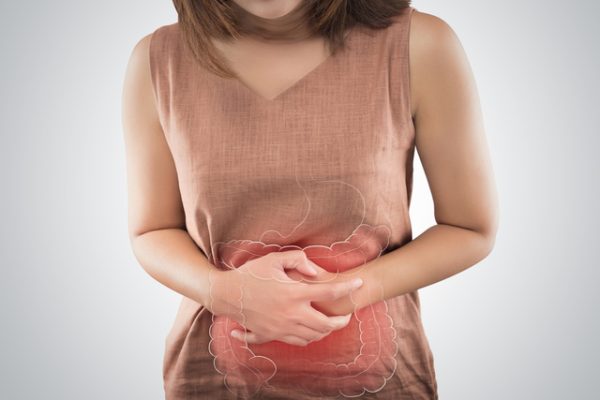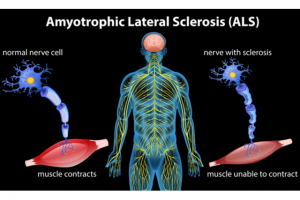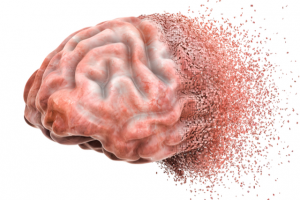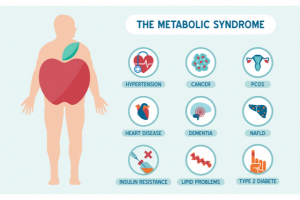Premenstrual Syndrome (PMS) and CBD Oil: Women’s New Best Friend
Page Overview
From mood swings to bloating, the negative symptoms associated with PMS are varied and disruptive. Can CBD oil help to relieve them?
Like many conditions specific to female reproductive health, premenstrual syndrome (PMS) is both under-researched and poorly understood. While some women are able to find relief through diet, exercise, and traditional NSAID painkillers (aspirin, ibuprofen), many more suffer in silence.
As researchers continue to unearth the potential benefits of CBD oil, its use as a more natural, alternative treatment option for a number of conditions and ailments is becoming more recognised. From its pain-relieving properties to mood-improving effects, cannabidiol (CBD) looks to be an ideal candidate in the treatment of PMS symptoms.
As with any new treatment plan, it’s important you consult your doctor before using CBD oil to manage your PMS. You might also consider speaking with a cannabis doctor who specializes in using cannabidiol as a medical treatment.
Here’s everything you need to know about using CBD oil for PMS and whether it can serve as a viable option for you.
Benefits of Using CBD Oil for PMS
Premenstrual syndrome is brought on by a shift in hormone and neurochemical levels about 5-11 days prior to a woman getting her period. The characteristics and duration of PMS differ from woman to woman, but CBD oil may still provide some form of relief without the side effects of well-known pharmaceuticals and without the ‘high’ of marijuana.
CBD Oil vs. Common Pharmaceuticals
The volume and variety of PMS symptoms can make treating this condition a challenge. While making healthy lifestyle changes can help, medications are sometimes needed; the most commonly recommended pharmaceutical treatments can provide relief, but often have side effects that can create new issues altogether. This is where cannabidiol oil may be able to help.
| Common PMS Medication for… | Notable Side Effects | Compared to CBD Oil |
|---|---|---|
| Mood changes: Antidepressants/SSRIs (Prozac; Paxil; Zoloft; Lexapro) | Nausea; drowsiness; nervousness; headaches; insomnia | CBD oil does not produce any of these side effects and may even help reduce anxiety and depression |
| Pain & Inflammation: Non-steroidal anti-inflammatory drugs (NSAIDs) (aspirin; ibuprofen; naproxen; celecoxib) | Stomach pain and ulcers; dizziness; liver problems; kidney problems; high blood pressure | CBD oil has been shown to reduce pain and inflammation without any of these side effects |
| Bloating: Diuretics (Aldactone) | Skin rash; nausea; headaches; stomach pain | Because of its anti-inflammatory effects on the digestive tract cannabidiol may help reduce bloating without these side effects |
| A combination of symptoms: Hormonal contraceptives (birth control pills; IUDs; contraceptive patches; hormonal injections) | Headaches and migraines; anxiety; blood clots; weight gain; ovarian cysts; fatigue; mood changes | CBD oil has been shown to produce a variety of physical and emotional benefits without these side effects |
CBD Oil vs. Marijuana
The Cannabis sativa plant is believed to contain as many as 100 compounds known as phytocannabinoids, each with their own unique properties. While tetrahydrocannabinol (THC) has proven health benefits, it is also the cannabinoid responsible for the ‘high’ typically associated with marijuana use.
For those looking to reap the health benefits of the cannabis plant without experiencing the intoxicating and mind-altering effects of THC, there is an equally beneficial cannabis extract called cannabidiol, or CBD. In other words, CBD oil will not get you high, and can easily be worked into your daily routine if you choose to use it to manage PMS.
Our Top Trusted CBD Oil Pick
Joy Organics THC Free Gummies are our top CBD pick because of their potency and delicious flavor. Each gummy contains 10-25mg of organic CBD which helps you tackle whatever stresses life throws at you, on-the go. Interested shoppers can check out Joy Organics Gummies using the native shopping unit below. All purchases are made with and shipped directly from the brand.Effectiveness of Using CBD Oil for PMS
The effectiveness of using CBD oil to treat PMS specifically is still being researched. However, several studies have produced promising results as far as using cannabidiol to treat many of the symptoms associated with PMS goes. From cramping to anxiety, soreness to irritability, and weight gain to depression, CBD oil may provide some long overdue and much-needed relief.
CBD Oil for Multiple PMS Symptoms
CBD oil’s anti-inflammatory effect on the body’s CB2 receptors could help reduce several mood-, weight-, and pain-related symptoms of PMS.
CBD impacts the CB1 and CB2 cannabinoid receptors located in your brain and central nervous system; the CB2 receptors regulate pain and inflammation by regulating immune responses in the body. Through its effect on the CB2 receptors, CBD oil has been shown to alter this response, stopping inflammation before it begins.
While many women rely on anti-inflammatory drugs like aspirin and ibuprofen for PMS relief, it’s not until recently that researchers have been able to draw a causal connection between inflammation and premenstrual symptoms. In a 2016 study published in the Journal for Women, researchers measured levels of inflammation in middle-aged women who were close to getting their period. As internal inflammation increased, so did the negative effects of PMS, which included changes in mood, breast and back pain, and weight gain. (The only PMS symptoms that didn’t appear to be linked to increased levels of inflammation were premenstrual headaches.)
When cannabidiol indirectly activates CB2 receptors, a series of anti-inflammatory responses are triggered in the body. So, by using CBD oil to regulate inflammation by way of CB2 activation, you could see relief from a number of negative PMS symptoms.
CBD Oil for PMS Pain Relief
Cannabis has been used for centuries to relieve menstrual and PMS pain; even Queen Victoria was alleged to have been prescribed cannabis by her physician to treat her menstrual cramps!
While there are many cannabinoids present in cannabis, recent research on using CBD to manage chronic pain has made it reasonable to assume that CBD plays a major role in providing relief from ongoing physical symptoms, like the headaches and soreness, that many women with PMS experience.
CBD oil impacts the body’s glycine receptors, which play a large role in pain perception. A 2012 study examining CBD’s effect on these receptors concluded, “These cannabinoids may represent a novel class of therapeutic agents for the treatment of chronic pain.” The study found CBD’s interaction with glycine receptors was separate from its activation of CB2 receptors, meaning CBD oil could provide relief from PMS pain and inflammation by simultaneously affecting two different pain and inflammation mechanisms in your body.
It is worth noting that THC can also help when it comes to PMS pain related to cramping. Period cramps are the result of contracting muscles and studies into the use of THC and CBD for muscle spasticity found the combination to be effective as both a pain reliever and a muscle relaxant. If you live in a state where the medicinal and recreational use of cannabis has been legally approved, you might consider using a full-spectrum CBD oil that contains THC to manage the pain and frequency of PMS cramps. To find out the legal status of cannabis products in your state, see our state-by-state guide.
Of course, if you’d prefer to not use THC in managing your pain, CBD could still provide relief from the pain you experience with premenstrual syndrome.
CBD Oil for Mood
Sudden mood changes and general low mood are common symptoms of PMS; if you’ve experienced bouts of anxiety, depression, or irritability before menstruation, you’re not alone. Luckily, CBD oil has been found to play a role in regulating mood, especially in people suffering from anxiety and depression.
CBD is an anandamide reuptake inhibitor, meaning that it increases the amount of anandamide that is available in the brain. Anandamide is a neurotransmitter known as “the bliss molecule” because it’s responsible for feelings of positivity and regulates motivation, joy, and general feelings of happiness. So, CBD oil’s effect on anandamide levels in your brain could help remedy feelings of melancholy and irritability you may experience during PMS.
Cannabidiol is also an adenosine reuptake inhibitor. Adenosine is a chemical in your body which may play a role in mood regulation through its effect on certain neurotransmitter pathways. According to a 2009 review of multiple studies conducted on adenosine’s role in a wide array of cognitive processes, including those related to anxiety and depression, activation of A2A adenosine receptors leads to increased dopamine production, which is crucial for combatting depression. Because CBD oil makes adenosine more available, A2A receptors are better activated, leading to higher dopamine production and ultimately an elevated mood, reduced anxiety, and increased clarity.
Similar to the way in which CBD oil can help reduce physical pain brought on by PMS, the research indicates that CBD affects two different neurological processes, both of which could yield a better and more stable mood prior to menstruation.
How to Take CBD Oil for PMS
Untreated pain, inflammation, and mood disturbances would certainly make day-to-day functioning difficult for any person. If you have found that you’re treading water when dealing with the symptoms of PMS, it may be time to consider CBD oil.
Before you begin, it is important that you talk to your doctor. While CBD oil is considered relatively safe and has little to no known side effects, it can interact with some prescription medications.
Once you have the go-ahead from your doctor, you’ll need to decide how you’d like to take CBD oil for your PMS. There are lots of different ways to take CBD oil and the delivery format you choose will depend on your preferences and your specific needs.
For example, for sudden and severe PMS symptoms, a CBD oil vape product may be the best solution. Vaping is one of the fastest ways to get CBD oil into the body, however, it also yields effects for a relatively short amount of time (typically 1-2 hours).
CBD oil capsules and edibles are probably the easiest methods of administration. CBD capsules and edibles may take a little longer to work, as the CBD oil has to pass through the digestive system before entering the bloodstream, but they provide a consistent and long-lasting dose.
CBD oil drops are also a nice option, and work fairly quickly as the CBD oil is absorbed through the thin lining of the mouth. As far as time to take effect and longevity of effects go, CBD oil drops fall somewhere in between vapes and edibles. Using CBD oil drops also makes it easy to track, control, and adjust your dosage as needed.
If you’re experiencing acute physical pain or soreness, a CBD topical applied directly to the area of discomfort may do the trick. There are also CBD companies like Endoca that sell vaginal suppositories which may be useful in reducing the pain of menstrual cramps.
Adding CBD oil to your daily routine is a great way to take advantage of CBD’s cumulative effects, which range from stabilizing hormones to reducing inflammation, even when not experiencing PMS symptoms.
CBD Oil Dosage for PMS
Just as no two women experience PMS in the same way, no two people will respond to CBD oil in the same way. This means that there is no universal dose for CBD oil. Always start with the dosage recommended on the CBD product you are using.
For further guidance, we at CBD Oil Review have analyzed hundreds of products and come up with a standard serving suggestion:
The CBD Oil Review Serving Standard is 25mg of CBD, taken twice daily.
If this amount doesn’t give you the results you’re looking for, we recommend increasing the serving size by 25mg every 3-4 weeks until you find relief.
For more information about CBD oil dosage in general, you can check out our Dosage Guide.
If you found this article interesting, you may also enjoy:
- The Women’s Guide to CBD Oil
- Does CBD Oil Affect Your Hormones?
- Can You Use CBD Oil While Breastfeeding?
- CBD Oil and Fertility: What You Need To Know
Sources:
- Ellen B. Gold et al. (2016) The Association of Inflammation with Premenstrual Symptoms - Mary Ann Liebert, Inc. https://www.liebertpub.com/doi/abs/10.1089/jwh.2015.5529?journalCode=jwh
- Prakash Nagarkatti et al. (2010) Cannabinoids as novel anti-inflammatory drugs - National Center for Biotechnology Information https://www.ncbi.nlm.nih.gov/pmc/articles/PMC2828614/
- Wei Xiong et al. (2012) Cannabinoids suppress inflammatory and neuropathic pain by targeting α3 glycine receptors - National Library of Medicine https://pubmed.ncbi.nlm.nih.gov/22585736/
- Uwe K. Zettl et al. Evidence for the efficacy and effectiveness of THC-CBD oromucosal spray in symptom management of patients with spasticity due to multiple sclerosis - National Center for Biotechnology Information https://www.ncbi.nlm.nih.gov/pmc/articles/PMC4710104/
- Dale G Deutsch A Personal Retrospective: Elevating Anandamide (AEA) by Targeting Fatty Acid Amide Hydrolase (FAAH) and the Fatty Acid Binding Proteins (FABPs) - National Library of Medicine https://pubmed.ncbi.nlm.nih.gov/27790143/
- Anandamide - PubChem® https://pubchem.ncbi.nlm.nih.gov/compound/Anandamide
- Joseph Maroon et al. (2018) Review of the neurological benefits of phytocannabinoids - National Center for Biotechnology Information https://www.ncbi.nlm.nih.gov/pmc/articles/PMC5938896/
- Hai-Ying Shen et al. Adenosine A2A Receptors in Psychopharmacology: Modulators of Behavior, Mood and Cognition - National Center for Biotechnology Information https://www.ncbi.nlm.nih.gov/pmc/articles/PMC2769003/
Health Conditions

CBD Oil & Chronic Pain: Does it Really Work?
Learn More

CBD for Colitis: Can Colitis Symptoms Be Managed with CBD?
Learn More

Crohn’s Disease and CBD Oil: Current Research and Benefits
Learn More

Gut Health and CBD Oil: A Complete Guide
Learn More

Liver Disease & CBD Oil: Risks, Benefits, & Research
Learn More

ALS & CBD Oil: Promising Research on Cannabinoids & Buying Tips
Learn More

Neurodegeneration & CBD Oil: Can It Rebuild & Reverse the Damage?
Learn More

Kidney Disease & CBD Oil: Research on Symptoms & Possible Benefits
Learn More

Metabolic Syndrome & CBD Oil: Addressing Multiple Conditions
Learn More
6 Smart Questions to Ask BEFORE You Buy CBD
Get the Ultimate CBD Buyer’s Guide and you won’t look at CBD the same way again!



 search
search